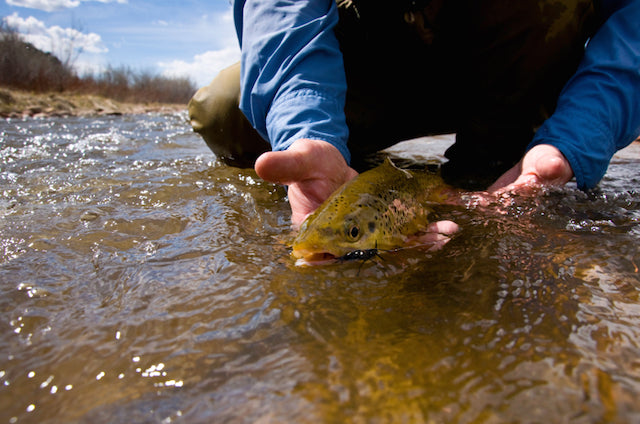How To Properly Release A Fish

The “catch-and-release” method of fishing is a sustainable practice that helps to maintain the population of your favorite fishing spot. But you can’t just chuck your catch back in the water and be done with it. This is a living creature you are interacting with, and doing a catch-and-release the wrong way is nearly always fatal. Here are some tips to help your quarry live to fight another day…
Handling the Fish: Speed is essential. You want to handle the fish as little as possible to avoid any undue stress. Handling a fish, especially with your bare hands, also removes the layer of mucous that protects the fish from disease and bacterial infections, which can kill the fish long after it has been released. A good way to minimize the damage is to wet your hands before handling the fish. Avoid handling the gills at all costs, as this can cause irreparable damage to their sensitive tissues.
Removing the Hook: Again, speed is important here. The best way to ensure a speedy release is to use barbless hooks. If you don’t have these, you can pinch the barb down with needle-nose pliers. It’s also best to hold the fish upside down in order to keep it pacified and to reduce handling the body. Pull or cut the hook as close to the fish as possible, taking great care not to harm him. Keep a pair of long-nose pliers and wire cutters in your tackle box to aid in hook removal. In circumstances where an attempt to remove the hook would do more harm than good, cut as much of the line from the hook as possible. NEVER pull on the line to try and release the hook – this can cause severe injury to the fish.
To Net or Not to Net? There is a debate on whether or not to use a net when catching a fish. Some argue that it’s best to avoid netting if possible. Others recommend netting as a way to reduce the amount of time in landing a fish. Both sides agree that a net should be fine mesh made from a soft material (such as cotton), and large enough to accommodate the fish, to reduce the risk of injury.

Never Play Your Fish Out. Just like humans, fish build up lactic acid in their muscles when they are exerting themselves. During the fight, the build-up of lactic acid can actually be fatal to the fish. When you land a fish, retrieve him as quickly as possible. This will also reduce the amount of oxygen he uses up during the fight, and his recovery time will be quicker.
Releasing the Fish: Instead of tossing the fish back, gently lower him into the water. If you need to revive the fish, move him in a figure-8 motion, or hold the fish so that he faces upstream to allow the current to flow over the gills. Never move a fish backwards as this can damage the gills.
- John Harley